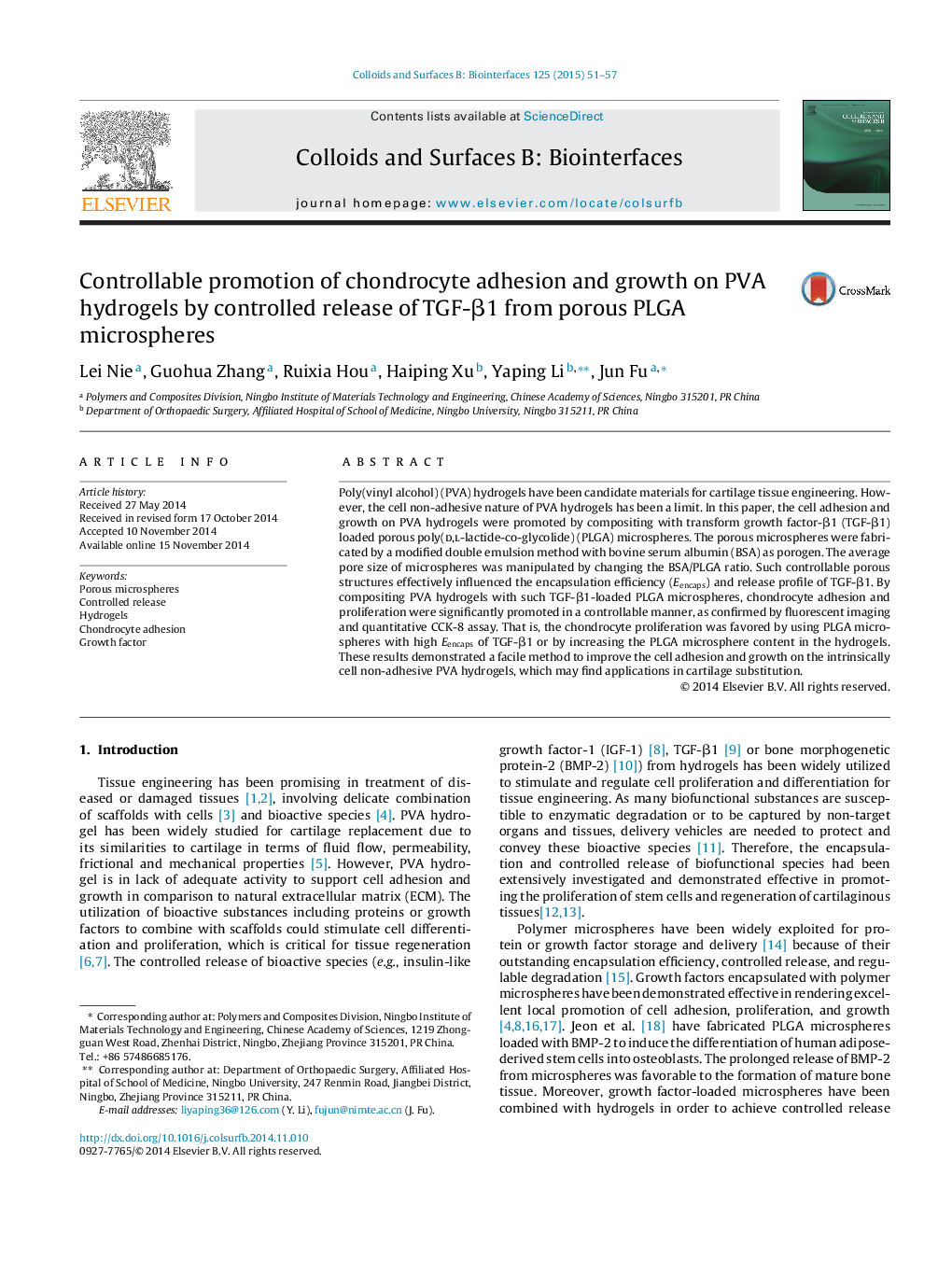| Article ID | Journal | Published Year | Pages | File Type |
|---|---|---|---|---|
| 599566 | Colloids and Surfaces B: Biointerfaces | 2015 | 7 Pages |
•TGF-β1-loaded porous PLGA microspheres provide release profiles controllable by the pore size.•Compositing the TGF-β1-loaded microspheres to PVA hydrogels promoted cell adhesion and growth.•Cell adhesion and growth on hydrogels depended on TGF-β1 release profile and microsphere content.
Poly(vinyl alcohol) (PVA) hydrogels have been candidate materials for cartilage tissue engineering. However, the cell non-adhesive nature of PVA hydrogels has been a limit. In this paper, the cell adhesion and growth on PVA hydrogels were promoted by compositing with transform growth factor-β1 (TGF-β1) loaded porous poly(d,l-lactide-co-glycolide) (PLGA) microspheres. The porous microspheres were fabricated by a modified double emulsion method with bovine serum albumin (BSA) as porogen. The average pore size of microspheres was manipulated by changing the BSA/PLGA ratio. Such controllable porous structures effectively influenced the encapsulation efficiency (Eencaps) and release profile of TGF-β1. By compositing PVA hydrogels with such TGF-β1-loaded PLGA microspheres, chondrocyte adhesion and proliferation were significantly promoted in a controllable manner, as confirmed by fluorescent imaging and quantitative CCK-8 assay. That is, the chondrocyte proliferation was favored by using PLGA microspheres with high Eencaps of TGF-β1 or by increasing the PLGA microsphere content in the hydrogels. These results demonstrated a facile method to improve the cell adhesion and growth on the intrinsically cell non-adhesive PVA hydrogels, which may find applications in cartilage substitution.
Graphical abstractFigure optionsDownload full-size imageDownload as PowerPoint slide
